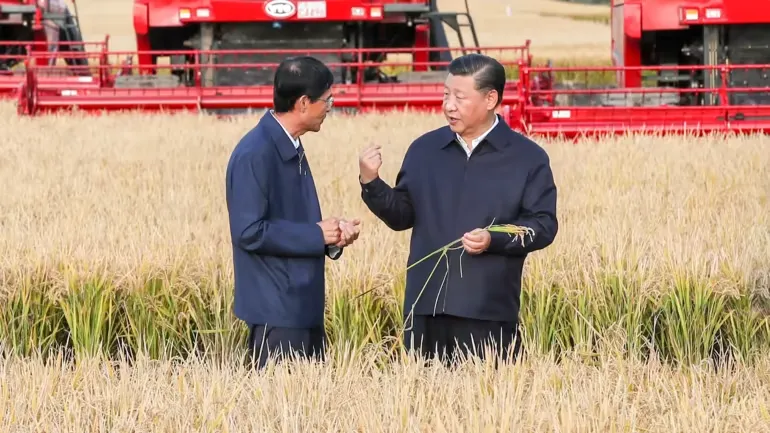China: No worries over wet wheat

Markets appear to be shrugging off reports that the world’s biggest wheat producer could have serious quality problems.
China’s prime wheat-growing region received a deluge of rain at the end of harvest.
Fields of ripe wheat in Henan province were flooded the week ending May 28. That province produced 28 percent of China’s wheat crop last year.
Emergency teams have been dispatched to help drain water from fields and to mobilize drying equipment.
“Make full use of various places such as town squares or playgrounds, the front and back of houses to dry and harvest wheat to prevent sprouting and mould,” the agriculture ministry told farmers.
Forecasters were calling for another bout of medium-to-heavy rainfall in southern Henan starting June 3.
Ma Wenfeng, a senior analyst with Beijing Orient Agribusiness Consultancy, told the rains have affected most of the wheat-producing areas of central and southern China, not just Henan province.
Ma estimates 30 million of the anticipated 137 million tonnes of production have been affected, with 10 to 20 million tonnes of that wheat sprouted and not fit for human consumption.
MarketsFarm analyst Bruce Burnett said this likely bodes well for Canadian spring wheat demand.
China is already the top buyer of Canadian wheat this year, purchasing 2.4 million tonnes through the first eight months of 2022-23, nearly double the next biggest market.
“They’ve had a very strong import program this year and I would expect that perhaps they’re going to have another strong import program (in 2023-24) because of the poor quality,” he said.
China is poised to overtake Egypt as the world’s largest wheat importer in 2022-23, with the United States Department of Agriculture forecasting China will buy 13.5 million tonnes.
Burnett said there were already some quality issues with China’s crop because of a wet growing season.
“Under those conditions, you get more fusarium and diseases during heading like smut and bunt and other fungal infections,” he said.
The most recent downpour came at an inopportune time. China’s harvest started in the south in April and was still in full swing in Henan when the rains arrived during the week ending May 28.
Weather maps published by the USDA show rainfall that week was between 200 and 600 percent of normal in Henan, Shandong and Hebei, three provinces that account for 57 percent of the country’s wheat production.
“They’re looking at some quality losses and fairly extensive quality losses,” said Burnett.
China grows wheat similar to soft red wheat, so millers need to import high protein wheat to blend with it. They buy from Canada, the U.S. and Australia.
Burnett anticipated China will need to import more spring wheat, although it will largely depend on price. If the price gets too high, it will rely on domestic stocks.
But wheat prices have been falling of late, including spring wheat futures. That should increase demand from China, he said.
The market seems to be ignoring fundamentals, including the delayed planting of the spring wheat crop in North America, the dismal condition of the U.S. hard red winter wheat crop and now China’s problems.
It seems to be more concerned about macroeconomic factors like the impending recession.
“Sometimes the market cares about the facts,” said Burnett.
“Right now, it doesn’t really seem to care too much.”
Read also
Wheat in Southern Brazil Impacted by Dry Weather and Frosts
Oilseed Industry. Leaders and Strategies in the Times of a Great Change
Black Sea & Danube Region: Oilseed and Vegoil Markets Within Ongoing Transfor...
Serbia. The drought will cause extremely high losses for farmers this year
2023/24 Safrinha Corn in Brazil 91% Harvested
Write to us
Our manager will contact you soon



